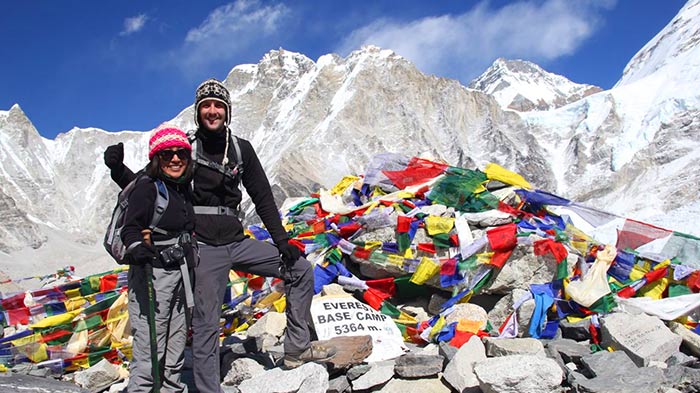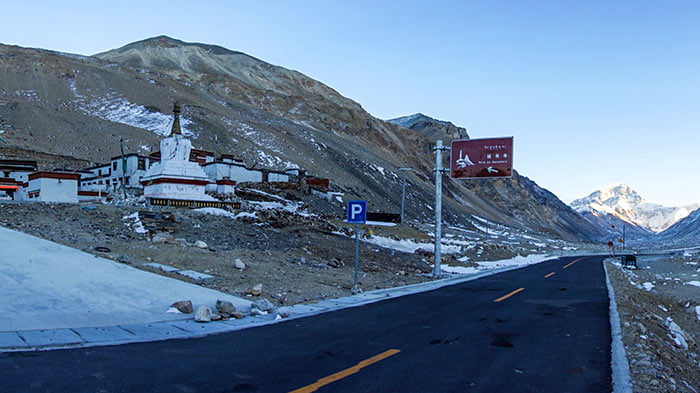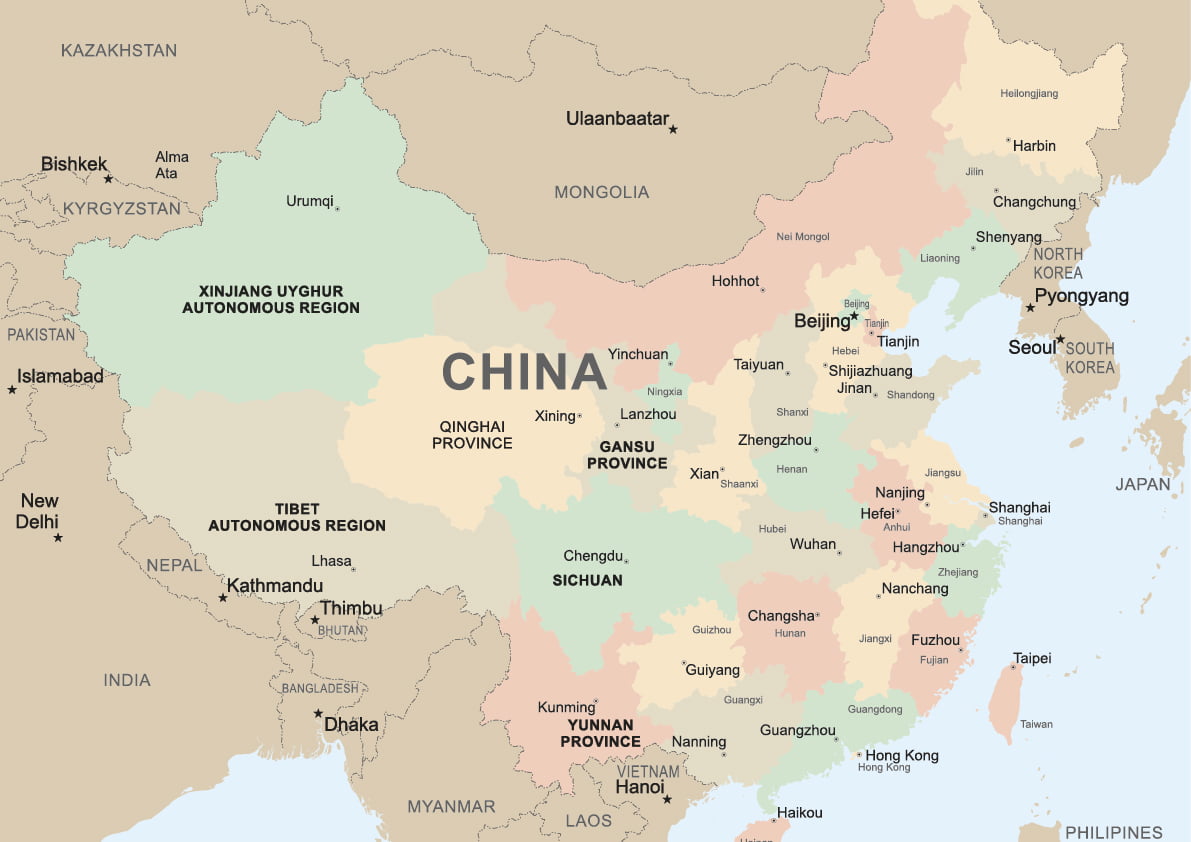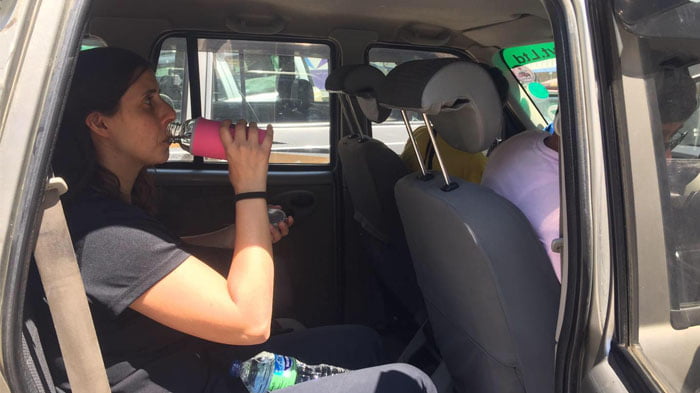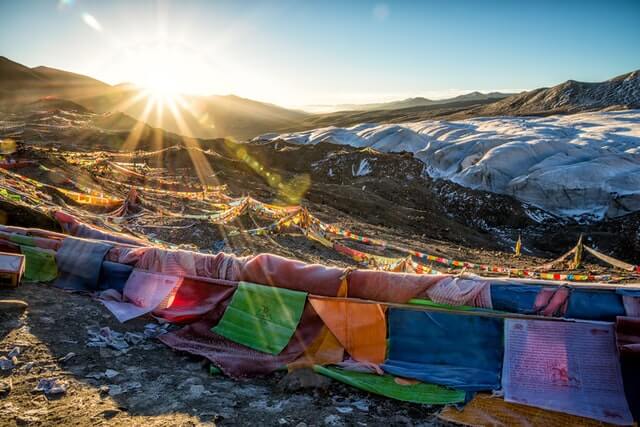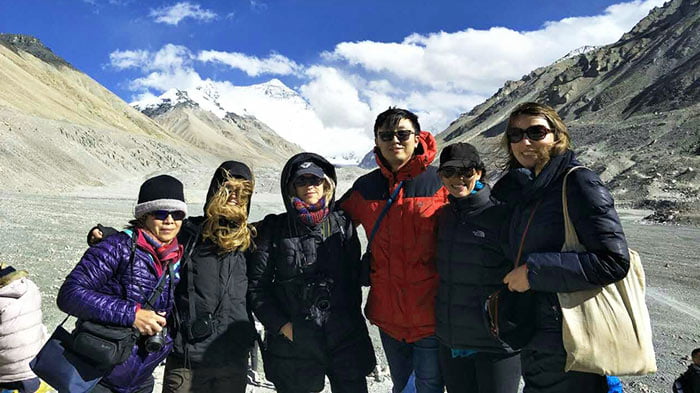Mount Everest, also known as Sagarmatha in Nepali and Qomolangma in Tibetan, is the world’s highest mountain. Located in the Mahalangur Himal sub-range of the Himalayas, it lies directly on the border between China and Nepal, with the border crossing the summit exactly. With half of the mountain in China and the other half in Nepal, it has meant that there have been climbing expeditions from both sides, prompting the permanent construction of base camps for the climbing expeditions on both sides of the mountain.
The first base camp set up was in 1921 in Tibet, for the first attempt at a climb on the slopes of the mountain by British explorers George Mallory and Guy Bullock, reaching the upper slopes of the North Col. At the time, Nepal did not allow foreign entry to the kingdom, so the first forays into climbing the mountain had to be made from the Tibetan side. It was not until Tibet was closed to foreign visitors in 1950, that any attempt was made to scale the mountain from the southern side in Nepal.
Explorers Bill Tilman and Charles Houston obtained permission from the Nepal government to mount an exploratory expedition to the lower slopes of the mountain and used the route that has now become the classic trekking route to Everest Base Camp (EBC) in Nepal. Two years later, the first expedition to the higher slopes from the southern base camp left and ascended to the South Col, making the temporary base camp that had been set up previously into a permanent camp.
Everest Base Camp in Nepal
Since it was first set up in 1950, the southern base camp has seen more climbing expeditions than the northern base camp, mainly due to the South Col route being the easier of the two routes. It was also the route used by Sir Edmund Hillary in his successful attempt to reach the summit in 1953, and the fatal attempt by George Mallory and Andrew Irvine in 1924, which left both climbers dead somewhere on the mountain.
EBC in Nepal has been becoming the hottest destination
The base camp in Nepal lies at an altitude of 5,364 meters above sea level and has been used as a base for climbing expeditions since 1950. However, the route to the base camp requires a trek of around 10 days to get there, stopping to acclimatize along the way. The route to the base camp is now one of the most popular trekking routes in the world, and sees more than 40,000 adventurous trekkers heading along its length every year.
How to Get there from Kathmandu
Getting to the southern base camp in Nepal requires a flight from Kathmandu to Lukla, then a long trek from Lukla to the base camp itself. Flights from Kathmandu’s Tribhuvan International Airport leave daily for the small town of Lukla, in the Solukhumbu Region of Nepal. The airport was set up under the supervision of Sir Edmund Hillary in 1964 and has since been renamed the Tenzing-Hillary Airport, after the two climbers who first reached the summit of Mount Everest.
The airport lies at the edge of the small town of Lukla, on the side of a mountain, and its short runway is edged at one end by a rock wall and at the other by a sheer drop, making it one of the hardest airports to land at in the world.
From Lukla, the trekking to EBC takes you through the village of Namche Bazaar (3,440m), where trekkers normally stop to rest for a day to acclimatize. Then it is one through Tengboche and Deboche to Dingboche (4,260m), where the second day of acclimatizing normally occurs. From Dingboche, it is another two days trekking to Gorak Shep (5,164m), the closest point to EBC, and from which trekkers take a side trip to Kala Patthar (5,545m). Kala Patthar is the most popular point from which to view Everest, since it cannot be seen from the base camp itself. After the side trip to Kala Patthar, it is then on to EBC the following morning, to make your mark at the base camp before heading back to Gorak Shep the same day, as there is no accommodation or camping at the base camp in Nepal.
Everest Base Camp in Tibet
On the northern side of the mountain, in Tibet Autonomous Region of China, lies the northern base camp, at an altitude of 5,200 meters. Lying close by the Rongbuk Monastery, the base camp has been in use for almost 100 years and is the more popular base camp for normal tourists as it does not require a great deal of trekking to reach it. In fact, there is no need to trek at all, as there is now an asphalt road that runs right up to Rongbuk Monastery.
An asphalt road to EBC in Tibet
Getting to the base camp in Tibet requires several permits that can only be arranged by a registered tour operator for Tibet, as well as requiring all tourists to be on an organized and pre-booked tour. Independent travel in Tibet is restricted, and all tourists must have a registered guide and private vehicle and driver. As a prestigious EBC tour operator in Tibet, we can help our clients get all the travel documents, and accommodation and other fully-escorted guide service for EBC tour in Tibet.
There is also a lot more to EBC in Tibet than in Nepal. While the southern base cap is very basic, the northern “tourist” base camp has tent guesthouses in the peak season and post office and local-run souvenir stands. The base camp that tourists can get to is not the actual “climbers” base camp, which lies at the foot of the Rongbuk Glacier.
How to Get there from Lhasa
Getting to EBC in Tibet from Lhasa requires a pre-booked tour to Tibet as well as several permits. Once you have the permits, and arrive in Lhasa, you will spend a few days acclimatizing to the increase in altitude and touring the sights of the city, such as the Potala Palace and the Jokhang temple, as well as Sera and Drepung Monasteries, among other sights.
After two days of acclimatizing, you are ready to hit the road, and will leave on the Friendship Highway for Shigatse, via the town of Gyantse. In Gyantse, you will get to visit the Pelkor Chode Monastery, with its 32-meter-high Kumbum, the only stupa of its kind in Tibet, with 108 different chapels over nine levels. Then it is on to Shigatse, the second city of Tibet, where you can visit the Tashilhunpo Monastery, the only monastery in Tibet that houses three separate schools of Tibetan Buddhism under the same roof.
When you leave Shigatse, you will drive for a few hours, before leaving the main highway near the town of Shelkar, to head south. From the Friendship Highway, Rongbuk Monastery is around 100 kilometers, and the drive takes several hours, arriving in the late afternoon, just in time to watch the glow of the setting sun shine on the slopes of the nearby Mount Everest.
In the morning, after a good breakfast and the stunning view of the sunrise on the mountain, you will get to travel to the base camp itself. Buses run for the final leg of the trip from the tourist base camp to the 5,200-meter-high hill nearby, which is the best spot to see the mountain’s summit from, although you can walk this short distance if you are properly acclimatized. You can also walk the eight kilometers from Rongbuk Monastery to the base camp if you are feeling particularly energetic, which takes around an hour for most tourists.

